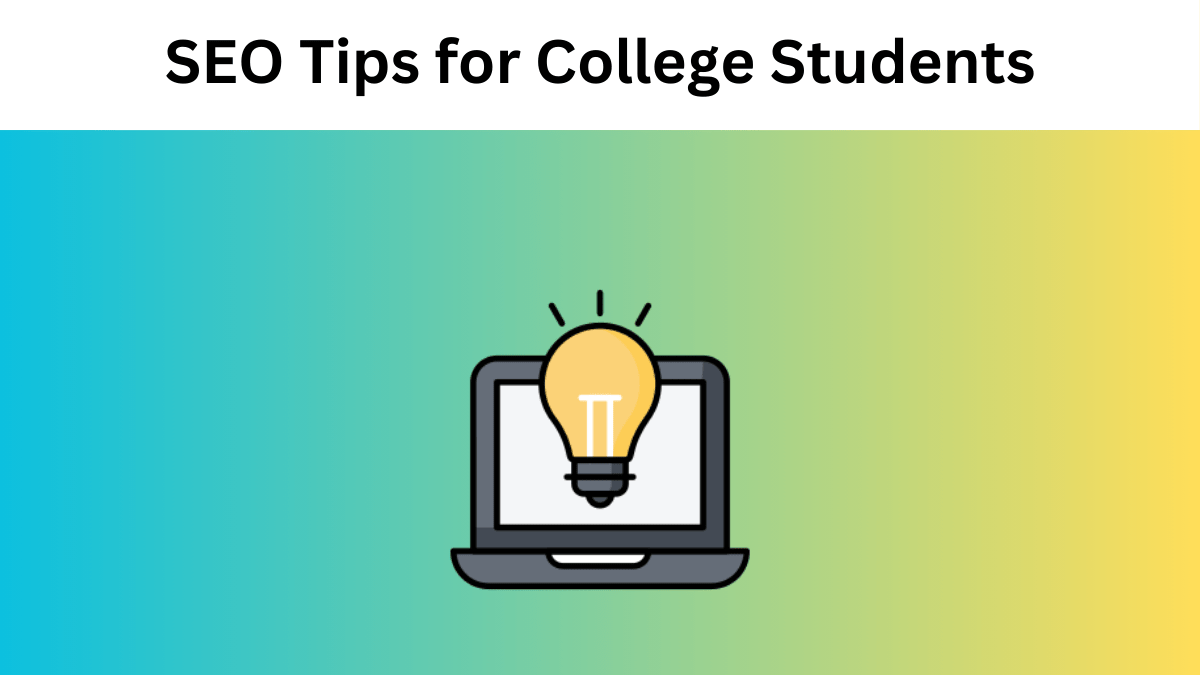10 SEO Tips for College Students Starting a Blog
You just started a blog in college. Maybe you intended it as an outlet for your awesomeness, an opportunity to share your expertise, or to make yourself look better on your resume. Either way, good for you! That said, if you want people actually to read what you’re writing, you can’t afford to ignore SEO (Search Engine Optimisation). SEO sounds like a super-high-tech spy term, but it’s really pretty simple once you get the hang of it. Here are 10 critical tips for maximizing SEO for your college blog.
Contents
Understand Your Audience
Don’t get writing just yet. Before you put your finger on the keyboard, think about who you’re trying to reach. College students? Industry professionals? Hobbyists? The better you understand your audience, the better you’ll be able to choose subjects to write about, decide on your tone, and see what sorts of search strings they’re typing. And that brings us to our next point.
Keyword Research is Key
Keywords are the terms or phrases that a person types into a search engine. You can use a tool such as Google Keyword Planner or Moz Keyword Explorer to find the best keywords related to your blog’s theme. Once you find them, avoid simply stuffing them into your posts. Use them, but don’t let them interrupt the flow of your writing.
Make Headlines Snappy
Your post title will show up to search engines and the people who will read it, so you need to make it count and clickable. Include your main keyword and make your headline interesting, useful, or informative enough to click on. For example, a title like “How to Get an A on Your Finals Without Losing Sleep” is definitely more catchy than “Tips for Exams”. If you struggle to write a good title, consult the best assignment writing service UK has to offer – UKWritings. This provider can suggest some great title ideas or take over your writing project entirely.
Optimize Your Meta Descriptions
The meta description is the short text that appears below your blog title on the search results page. Here’s how to optimize your meta descriptions:
- Include Keywords: Ensure your primary keywords are in the meta description to improve relevance.
- Cut It Short: Keep it to 155-160 characters to avoid being cut off in SERPs.
- Engage Readers: Use compelling language that encourages clicks, like “Learn how” or “Discover.”
- Paraphrase: This post’s main idea is summarised succinctly, appealing to the readers’ time and knowledge.
Use Headings to Your Advantage
Breaking your content into sections with headings (H1, H2, H3) makes your posts easier to read and helps with SEO. Keywords in headings are ok, but all headings should be relevant to the section they are headlining. This structure makes your content more readable for search engines, which can help increase your blog’s search rankings.
Optimize The Images
If your blog is full of images (and it should be – images are good!), make sure your visuals are optimized. Give files descriptive names and fill out the alt text with keyword-friendly descriptions. Not only does this make your images more accessible to blind readers, but it also boosts your site’s SEO because search engines read this text.
Link Wisely
Linking to other credible sites is a way to provide your readers with more information and show search engines that your content is reputable. Linking internally to other posts within your own blog is a way to keep readers on your site longer – but only do it if it’s relevant to your content.
Make it Mobile-Friendly
It’s unlikely that most people will read your blog on their computers these days. Ensure your blog is responsive, which means it should be easy and comfortable to read and use on a smartphone. Google uses responsiveness as a factor in search rankings, so it can help you with your SEO.
Speed Up Your Site
A slow-loading site can have a high bounce rate as prospective readers get fed up and leave before your page appears. You can reduce the time it takes for your site to load by compressing your images, using browser caching, and optimizing your code.
Regularly Update Your Blog
Google loves fresh content. If you keep updating your blog with new, relevant posts, search engines will view your site as active and relevant, boosting your SEO. One post a week should do the trick, but be sure to run it through a plagiarism changer tool to maintain originality and avoid penalties.
SEO Success Without the Stress
It’s easy to get caught up in the technical details of SEO and forget that it’s not about tricking search engines but making your site more accessible and enjoyable for actual human beings. In addition to improving your college blog’s visibility, these tips will make your content more readable and pleasant for your audience. Remember to be authentic, engaging, optimized, and watch your college blog climb. Good luck!
